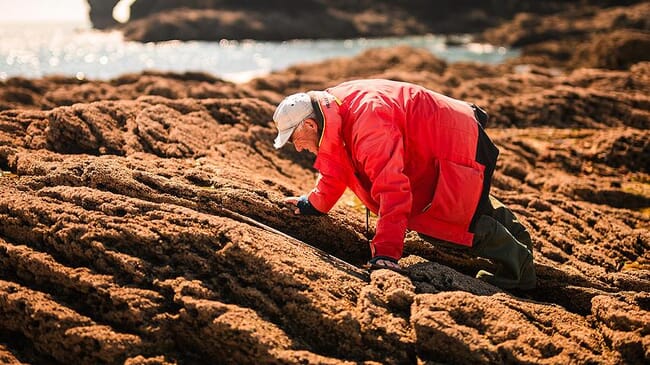
© Marine Biological Association
A group of scientists began compiling a list of the threats they believed were most likely to impact the world’s rocky shorelines over the coming quarter of a century, publishing their predictions in 2002. It included forecasts that – among other things – pollution from oil spills would decrease, the number of invasive species across the world would rise, genetically-modified organisms from aquaculture would have harmful effects on the ocean, and the impacts of global climate change would be felt more intensely.
Now, 25 years on, the same academics – along with a larger and more wide-ranging team of international experts – have revisited their forecasts and discovered that many of them were correct, either in whole or in part, while others have not had the impacts that were envisaged at the time.
They have also charted some of the other threats to have emerged and grown in significance since their original work, with notable examples including global plastic pollution, ocean acidification, extreme weather and light or noise pollution.
In doing so, they have also highlighted that while there are key issues they believe are likely to threaten the world’s coastlines between now and 2050, others may also emerge that require varying levels of local and global action to try to address them.
The two studies were led by Professor Stephen Hawkins, Lankester Research Fellow at the Marine Biological Association, and co-authored by Professor Richard Thompson OBE FRS, professor of Marine Biology and director of the Marine Institute at the University of Plymouth.
‘’Our two studies have shown that over the past 25 years, it is possible to forecast some of the challenges the planet might face in the future and to identify ways they might be addressed. However, there will always be things we can’t foresee – and things that don’t materialise as scientists might expect – and finding a balance will always be key to minimising the impact we have on our planet,’’ said Professor Hawkins in a press release.
What the 2002 predictions got right and missed
Retrospectively, they concluded that earlier concerns about aquaculture intensification and the potential impacts of genetically modified organisms have so far proved unfounded. They also noted that the original forecasts omitted the effects of artificial light and noise pollution, both of which can originate from aquaculture infrastructure. In addition, they overlooked extreme flood events – relevant for the aquaculture industry, as these can cause major problems for coastal aquaculture operations, including shellfish farming.
For the new study, the researchers collaborated with other colleagues from the university and various other organisations in the UK, USA, South Africa, Italy, Ireland, Chile, China and Monaco. Collectively, they incorporated expertise in disciplines including climate change, marine biology, plastic pollution, light and noise pollution, and eco-engineering demonstrating – the researchers say – the importance of factoring in multiple perspectives when discussing environmental threats.


